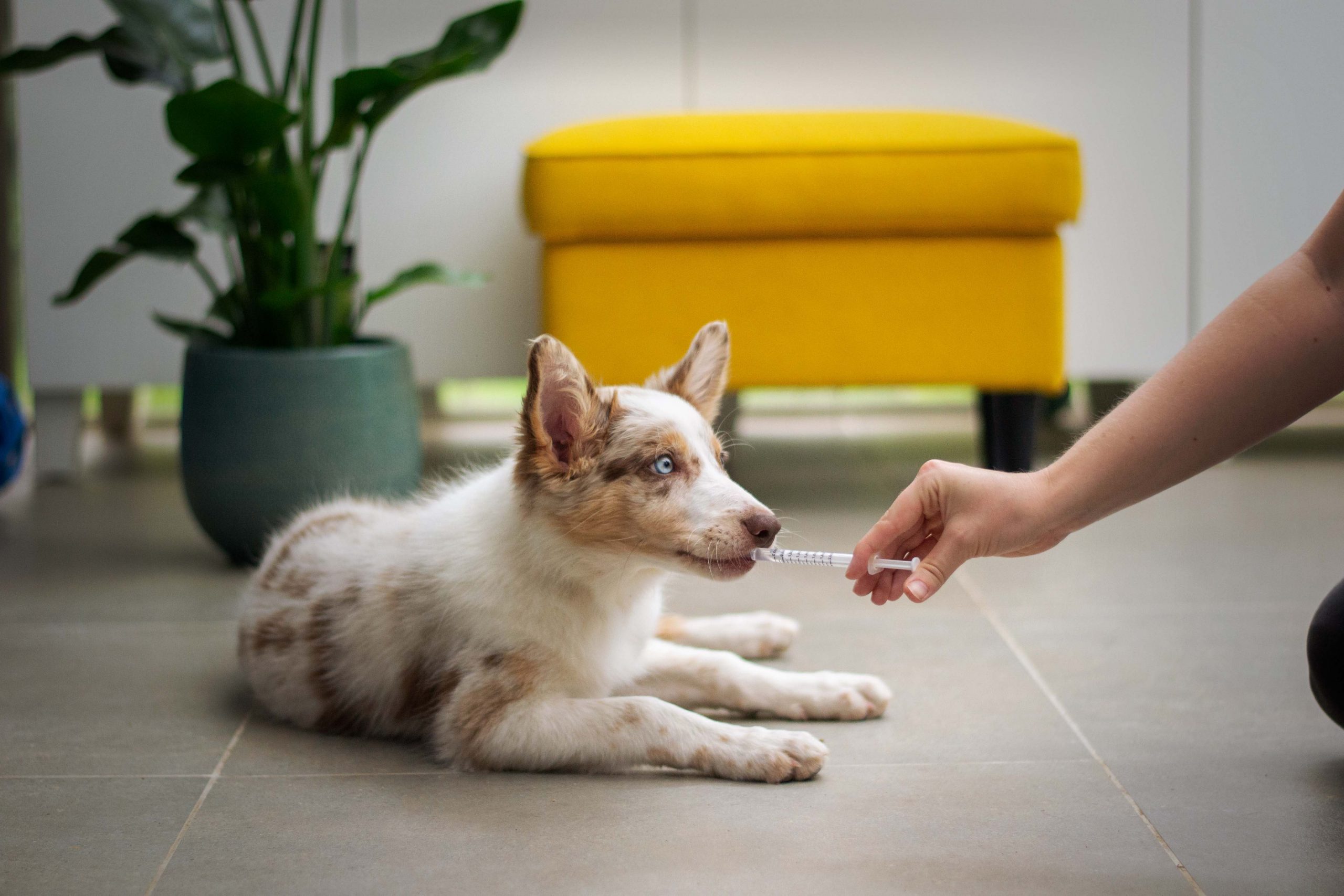by Katherine Porter, Owner of Four Paws & You Dog Training LLC.
The summer holiday is just around the corner. and tis’ the season for visits from friends and family—especially the four-legged kind too.
While no one can anticipate an emergency situation, you can be prepared in advance. If you’re traveling anywhere—from only a few minutes away to hours in the car—a first aid kit can be a lifesaver for humans and furry family alike.
The key to safety precautions for pets? Introduce your pup to the idea of cooperative care before emergency strikes. Cooperative care is not just your dog tolerating the experience of grooming or receiving medical care, it’s about preparing them for situations that can be stressful.
A trusting relationship sets the stage for a better experience when it’s time to trim nails, cut fur, or even administer medication. Try introducing muzzles, scissors, or crates before emergency strikes. That way, your pet won’t be overly stressed on top of being injured or in pain.
Here are some must-haves for creating or adding to your dog’s first aid kit:
Waterproof case
This will keep all of your first aid essentials dry. It may be helpful to have a waterproof case filled with first aid essentials at home, in your car, and anywhere else you visit frequently.
Gauze
In the even of an open or gaping wound, it’s important that you have various sizes of gauze that you can apply quickly to stop any active bleeding.
Scissors
These are necessary to trim fur away from lacerations or abrasions. Scissors are also useful for cutting gauze.
Syringes
Ideally, your first aid kit should include two syringes. One can help apply rubbing alcohol to your scissors, tweezers, and tick removal tool—to ensure that open wounds aren’t contaminated. The other syringe can be used to apply hydrogen peroxide to clean out a wound.
Tick Removal Tool
This type of tool slides over the body of the tick to pluck it out of your dog’s fur. With long coated or double coated dogs, scissors help to cut away the extra fur so you can see the skin and the tick better.
Blanket or towels
Wrap these around your dog in case of a large wound or even to be used to help with combating heatstroke. You can soak the blanket or towel in cool water and drape on your dog, resetting as necessary.
Emergency Blanket
Emergency blankets look like aluminum foil and can be used if your dog is going into shock. They also reflect light, so they can be used to signal for help.
Styptic Pencil
This helps stop mild bleeding. If your dog breaks a nail, applying this pencil can stop the bleeding quickly.
Rubbing Alcohol
Rubbing alcohol helps disinfect your scissors, tweezers, and/or tick removal tool to make sure wounds aren’t contaminated.
Doggie Antibacterial Spray
This can be applied to a wound or to gauze—and then placed on the wound to keep the area clean until you see your dog’s veterinarian.
Crate and Muzzle
A good life skill for your dog? Learning to comfortably be in a crate and wear a muzzle, so in the event of an emergency, this experience doesn’t added to your already distressed dog.
Veterinarian Phone Numbers
When you’re in an emergency, you don’t want to be google searching your vet’s name. Nor do you want a pet sitter trying to track you down for your local vet’s information. Instead, tape the numbers of trusted vets to the inside of your dog’s first aid kit and ensure anyone who is caring for your dog knows where to access it.
About the Author
 My mission is helping frustrated and embarrassed pet parents enjoy life with their dog. I guide pet parents to practice skills in a mutually respectful way, using reward-based training. My goal is strengthening relationships between pet parents and beloved dogs.
My mission is helping frustrated and embarrassed pet parents enjoy life with their dog. I guide pet parents to practice skills in a mutually respectful way, using reward-based training. My goal is strengthening relationships between pet parents and beloved dogs.


